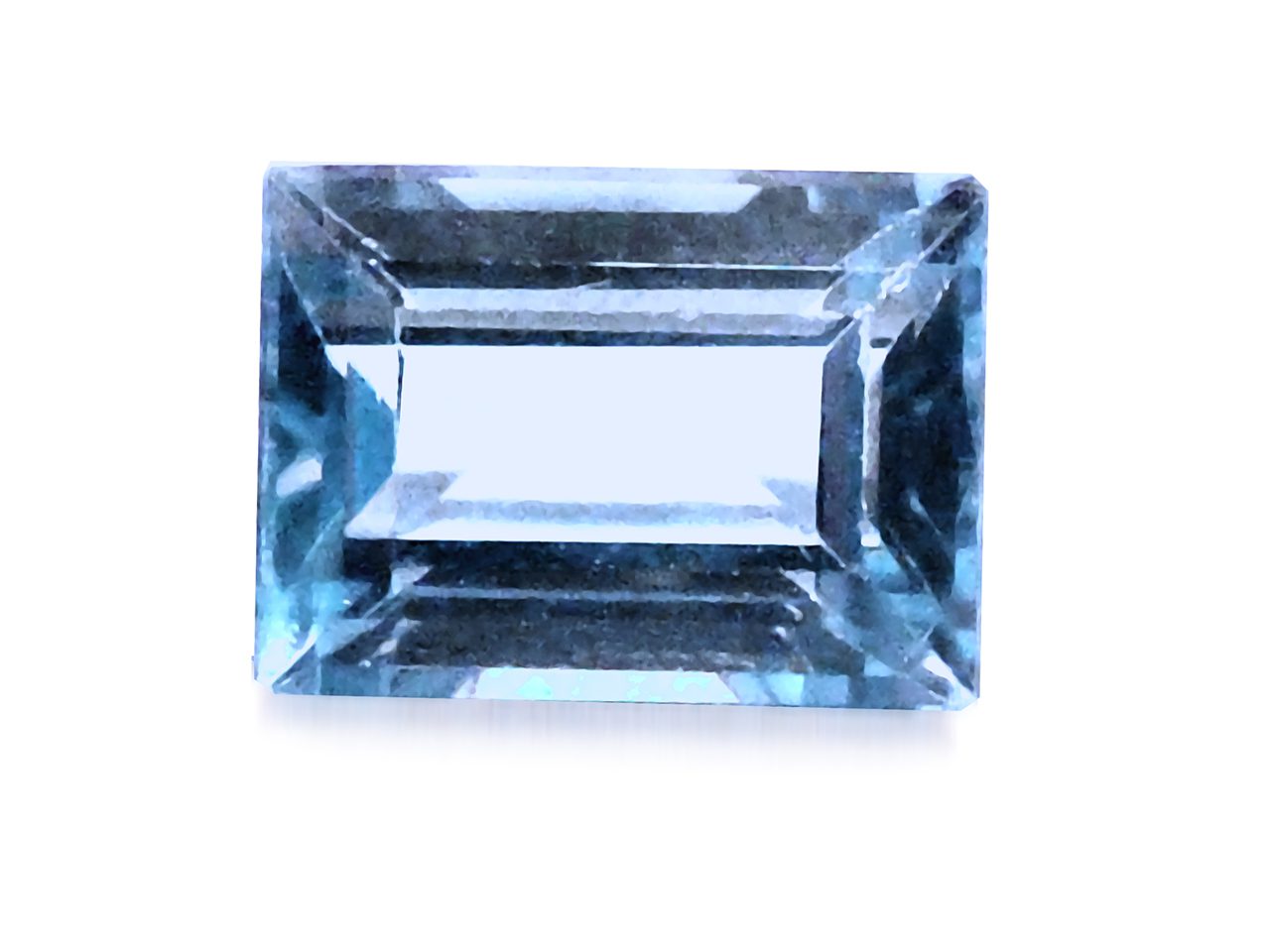Distinguishing Aquamarine Imitations
How can gemologists quickly distinguish aquamarines from aquamarine imitations? We’ll review some common lookalikes and their most notable differences.
6 Minute Read
Blue Apatite
Actually a large mineral group with many varieties, apatite can occur in many colors, including blueish green, greenish blue, and blue. Of course, these are the colors that can be offered as aquamarine imitations.
The optical and physical properties of these natural gemstones can vary significantly by type and color, but they all differ from those of aquamarine. Blue apatites have a higher refractive index (RI), around 1.633-1.644, than aquamarines, around 1.567-1.590. They also have a higher specific gravity (SG), around 3.2, than aquamarines, around 2.66-2.80. A refractometer and hydrostatic balance test, respectively, should distinguish them.
An easily noticeable feature of apatite is its striking luminescence under ultraviolet light. Blue apatites can show a violet-blue to sky blue fluorescence. Greener apatites can show a greenish mustard yellow color. In contrast, aquamarine has no luminescence.
Sky Blue Topaz
A very popular, inexpensive gemstone, “sky blue topaz” is often used to imitate other blue gems, including aquamarines. This material starts out as natural colorless topaz. After a radiation and heat treatment process, the stones turn blue. Those that show a light, aqua blue color are known as “sky blue topaz” in the gem trade. (Naturally blue topaz is…
International Gem Society
Related Articles
Aquamarine Value, Price, and Jewelry Information
Can You Identify Gems Without Seeing Gemstone Colors?
Aquamarine Durability
Aquamarine Setting Advice
Latest Articles
Opal Buying Guide
Amethyst Sources Around the World: The Geological Story Behind These Purple Gemstones
Brazilianite Value, Price, and Jewelry Information
Ruby-Glass Composites vs Leaded Glass Clarity Enhancements
Never Stop Learning
When you join the IGS community, you get trusted diamond & gemstone information when you need it.
Get Gemology Insights
Get started with the International Gem Society’s free guide to gemstone identification. Join our weekly newsletter & get a free copy of the Gem ID Checklist!
